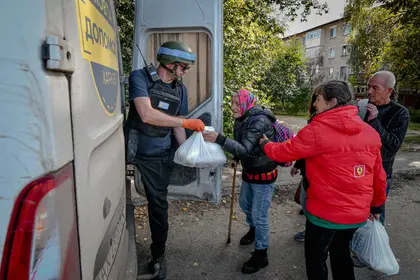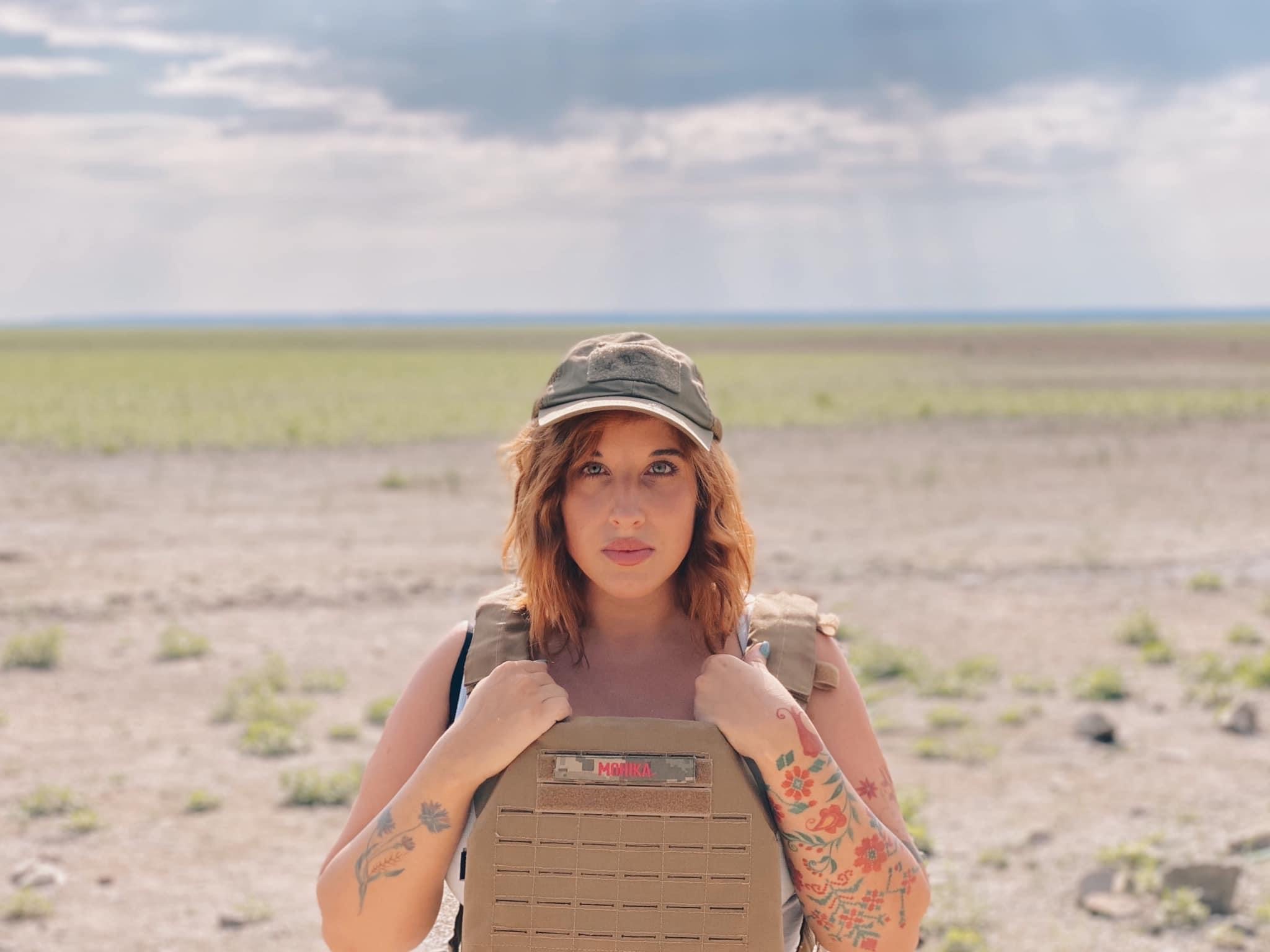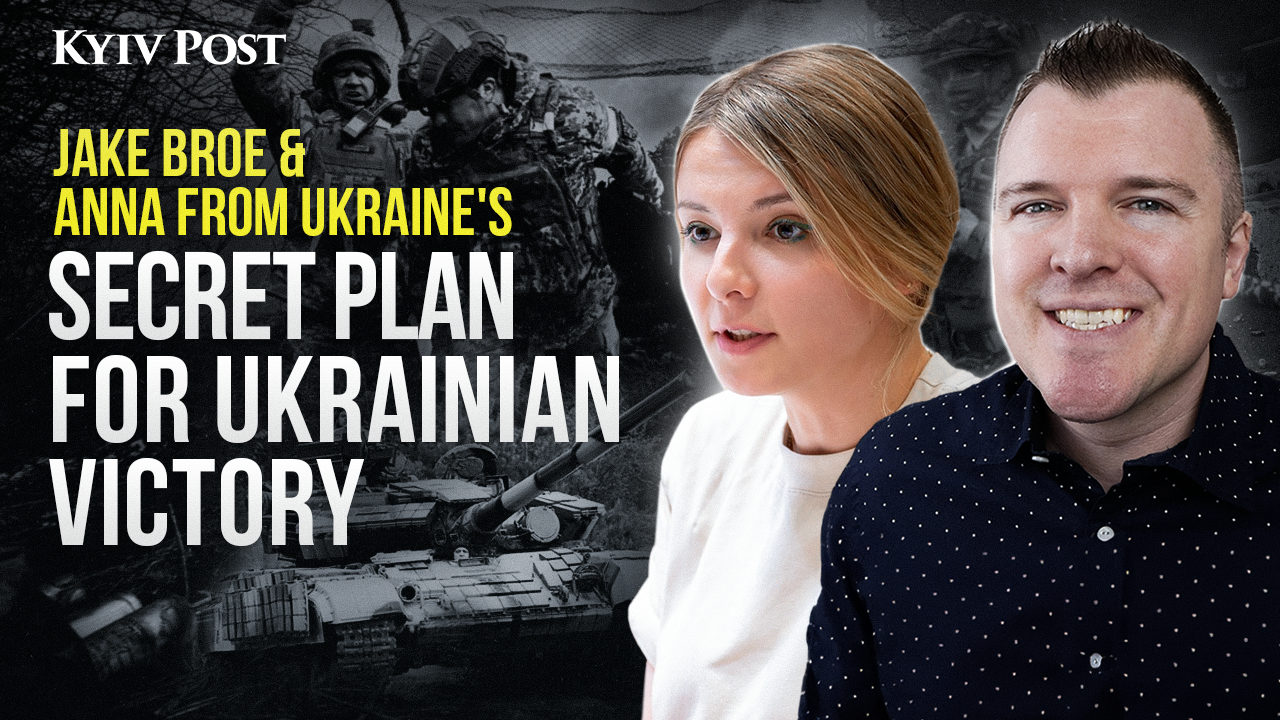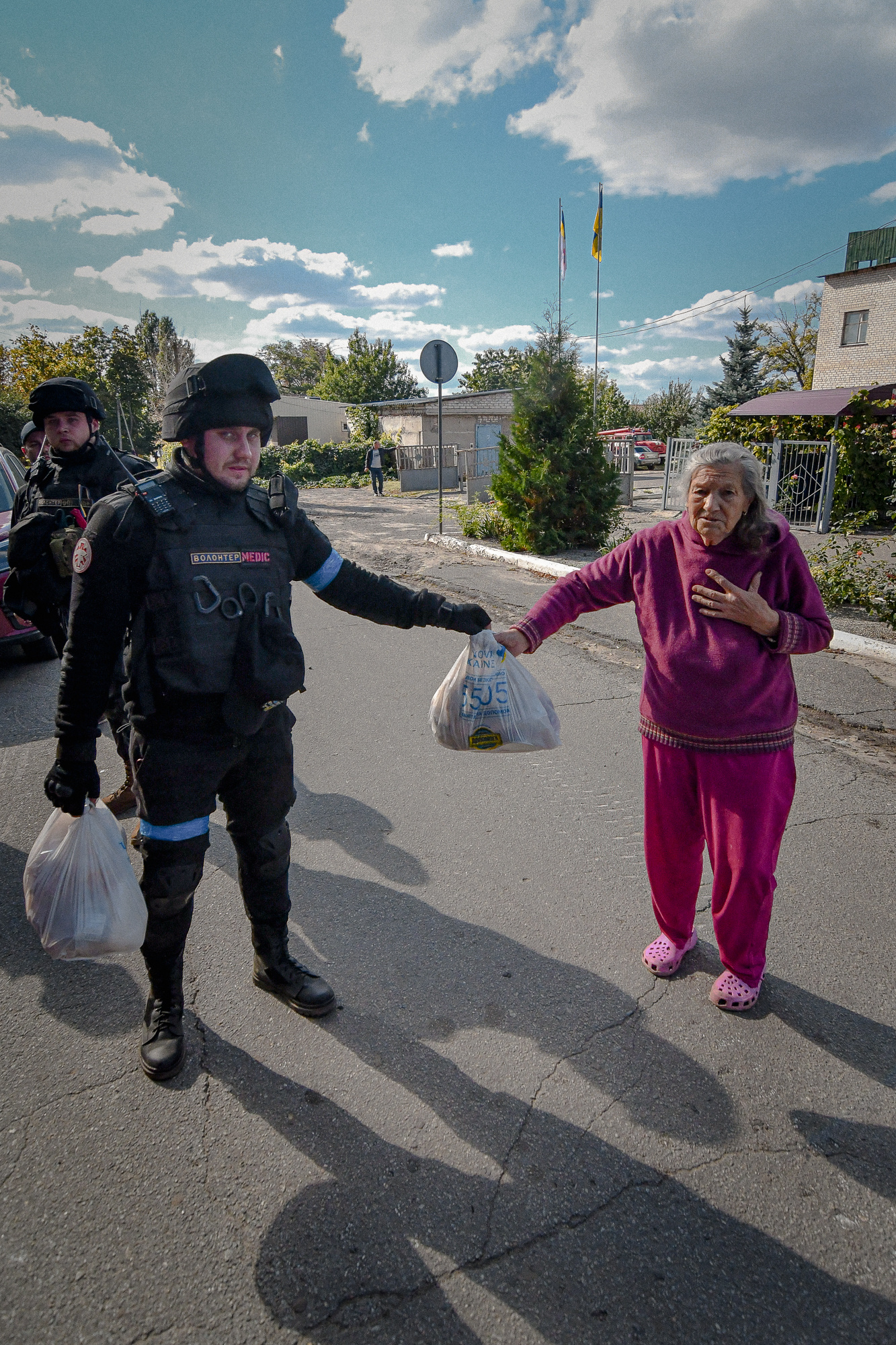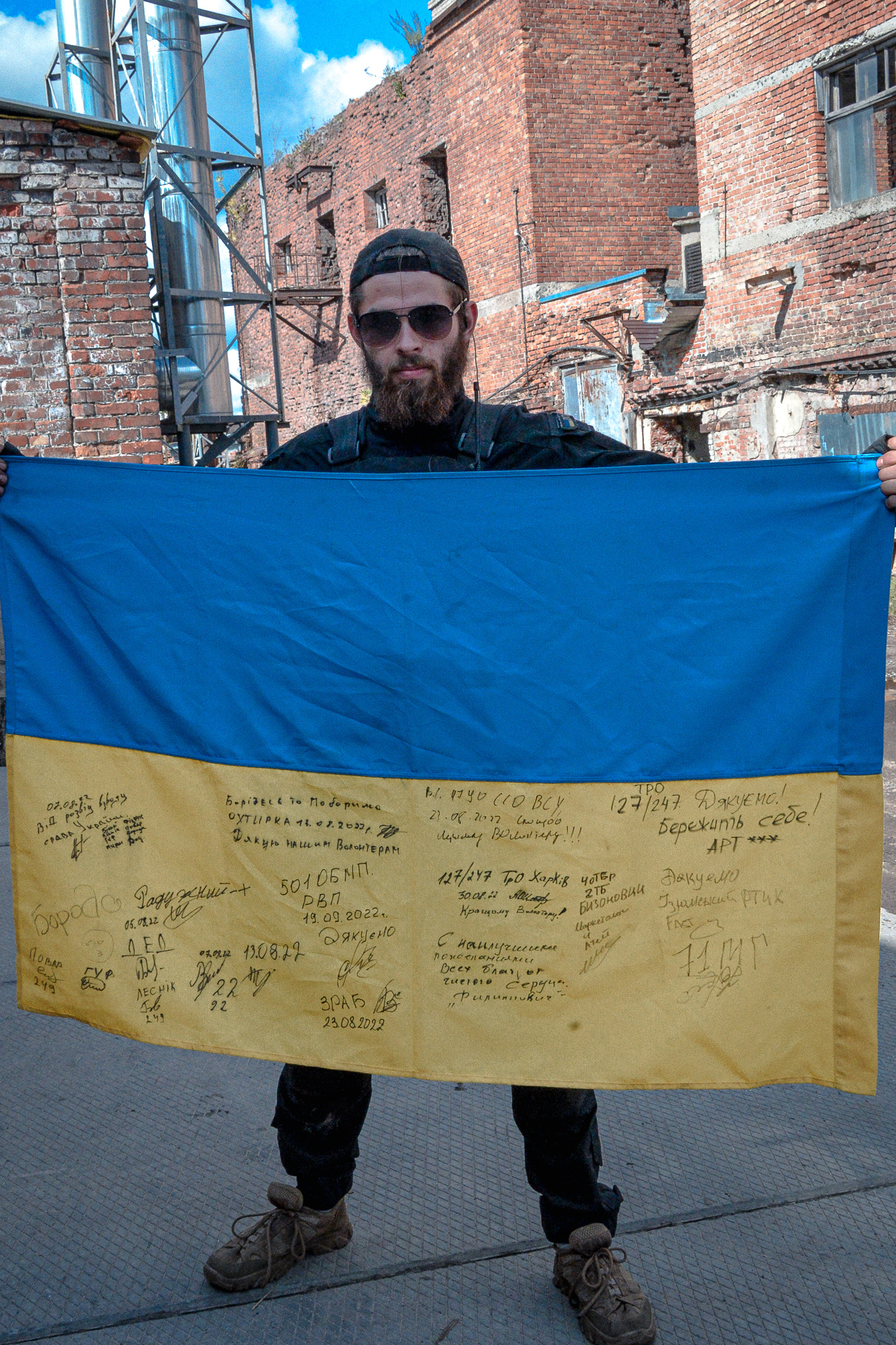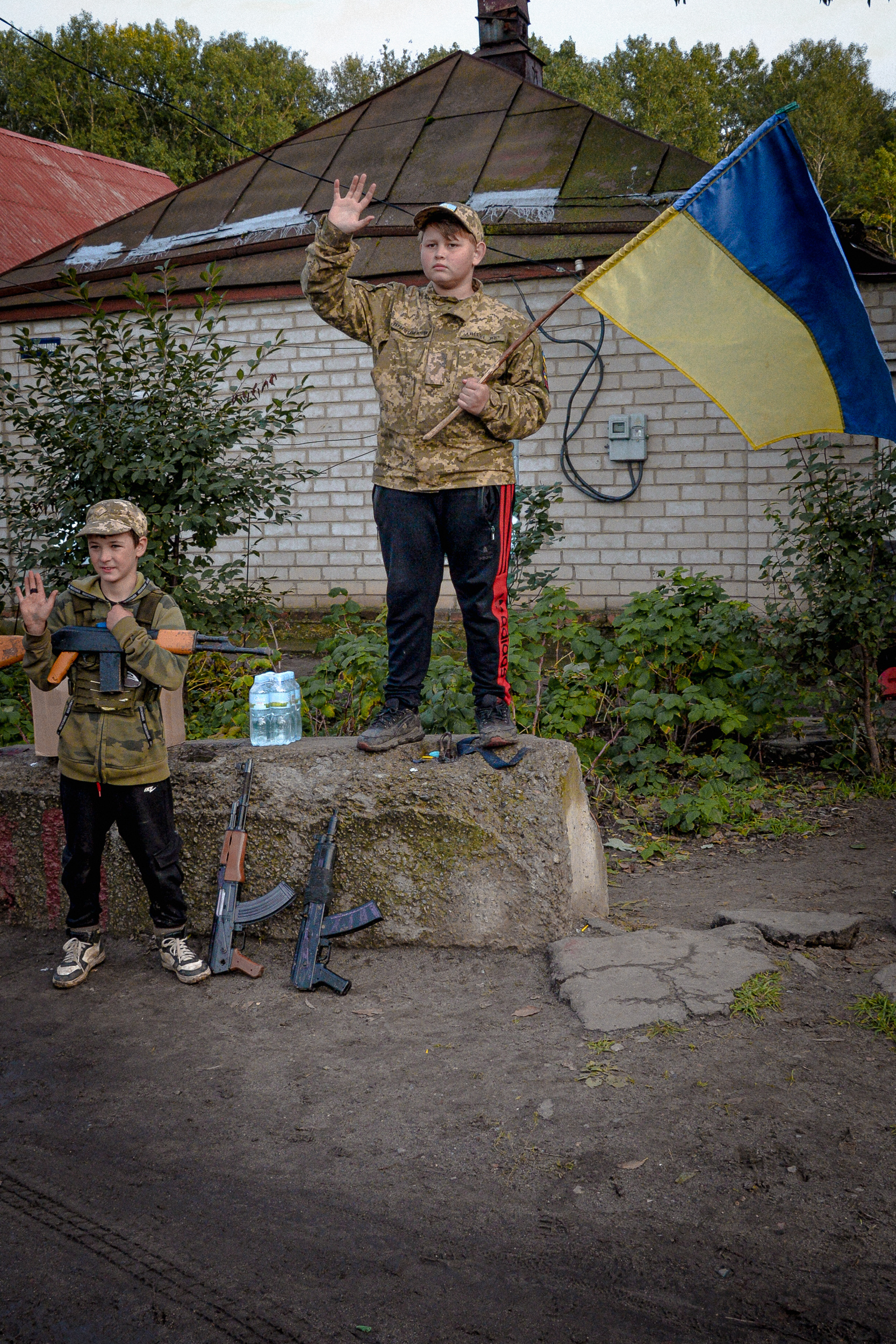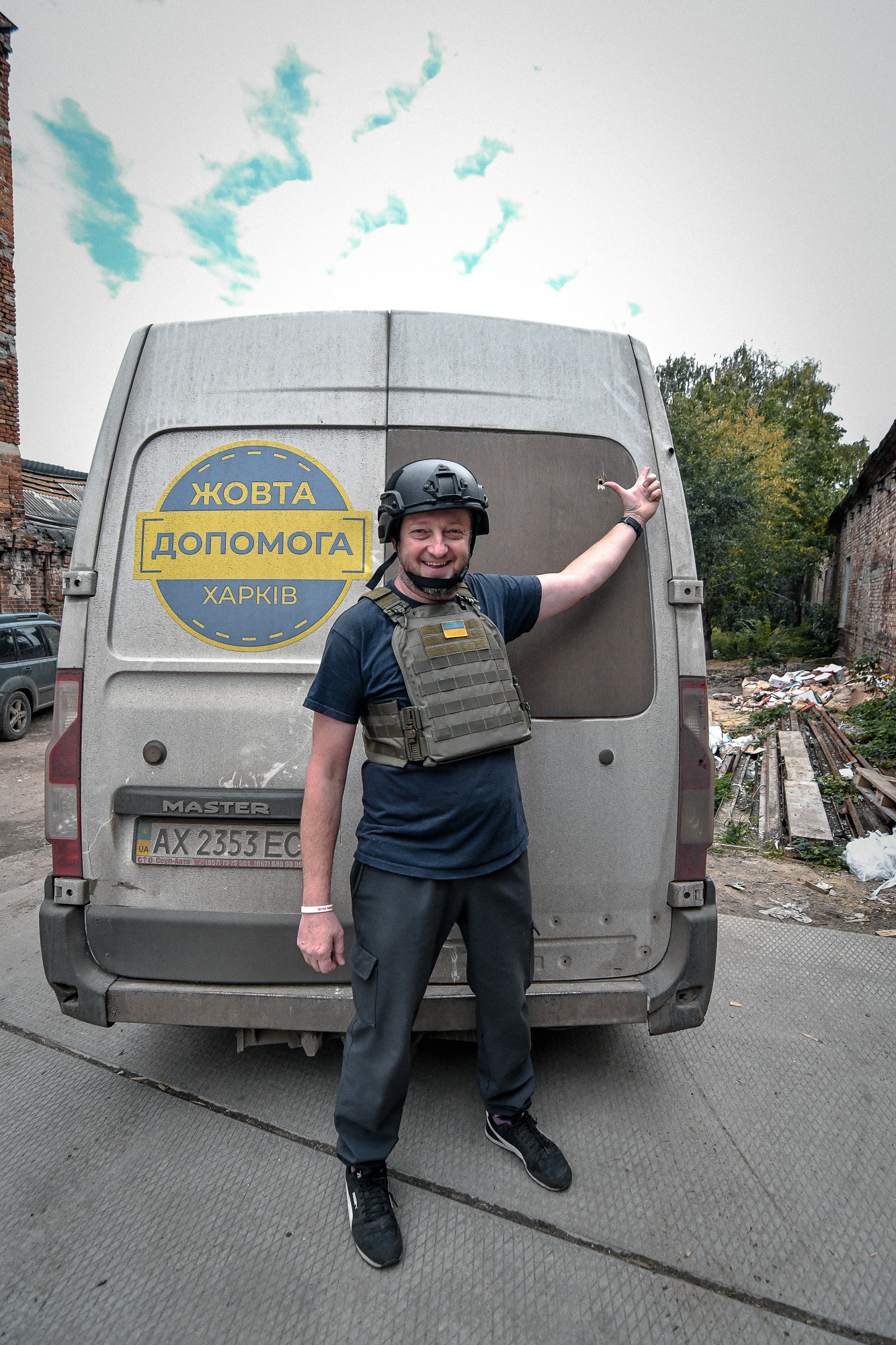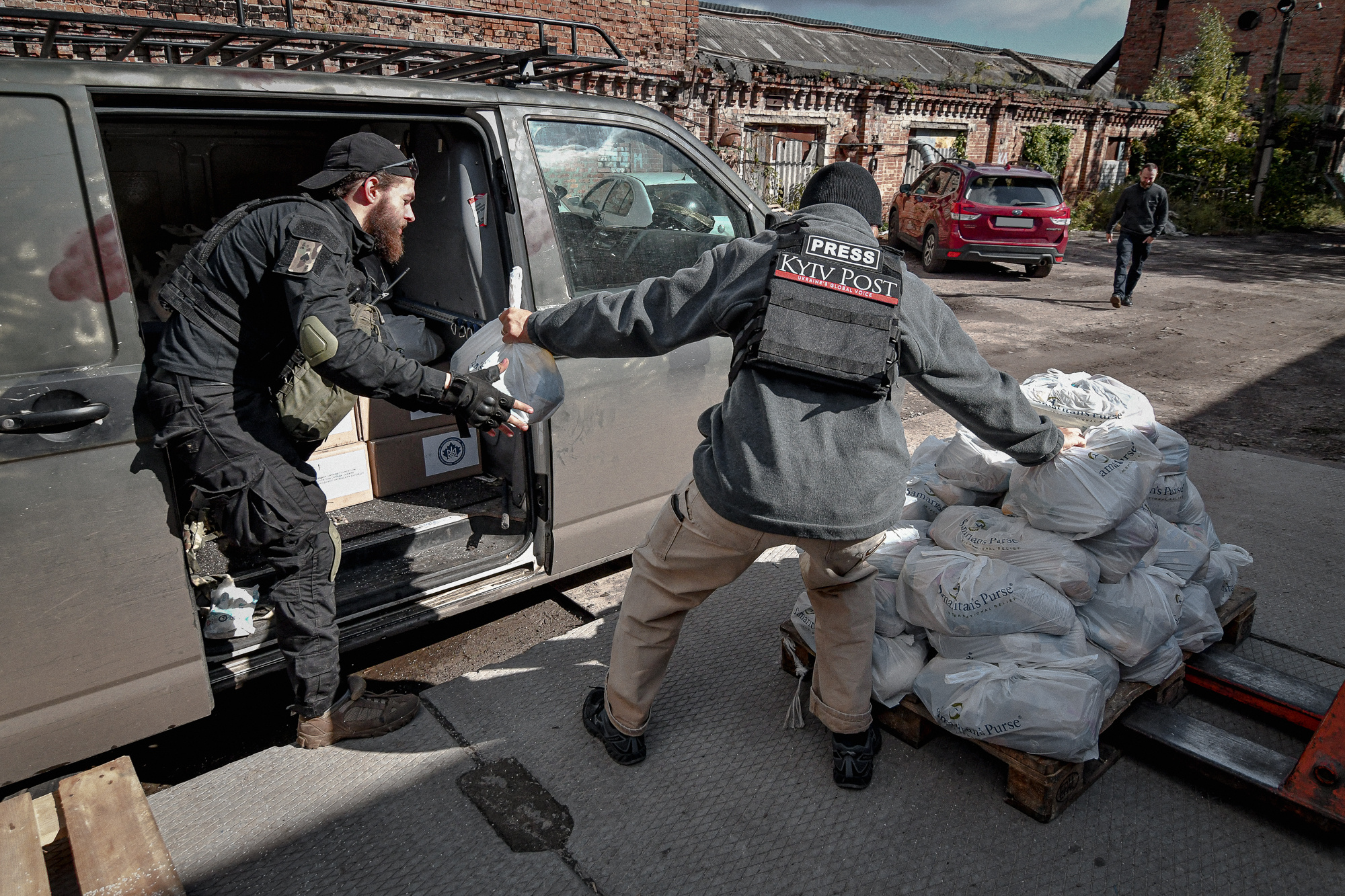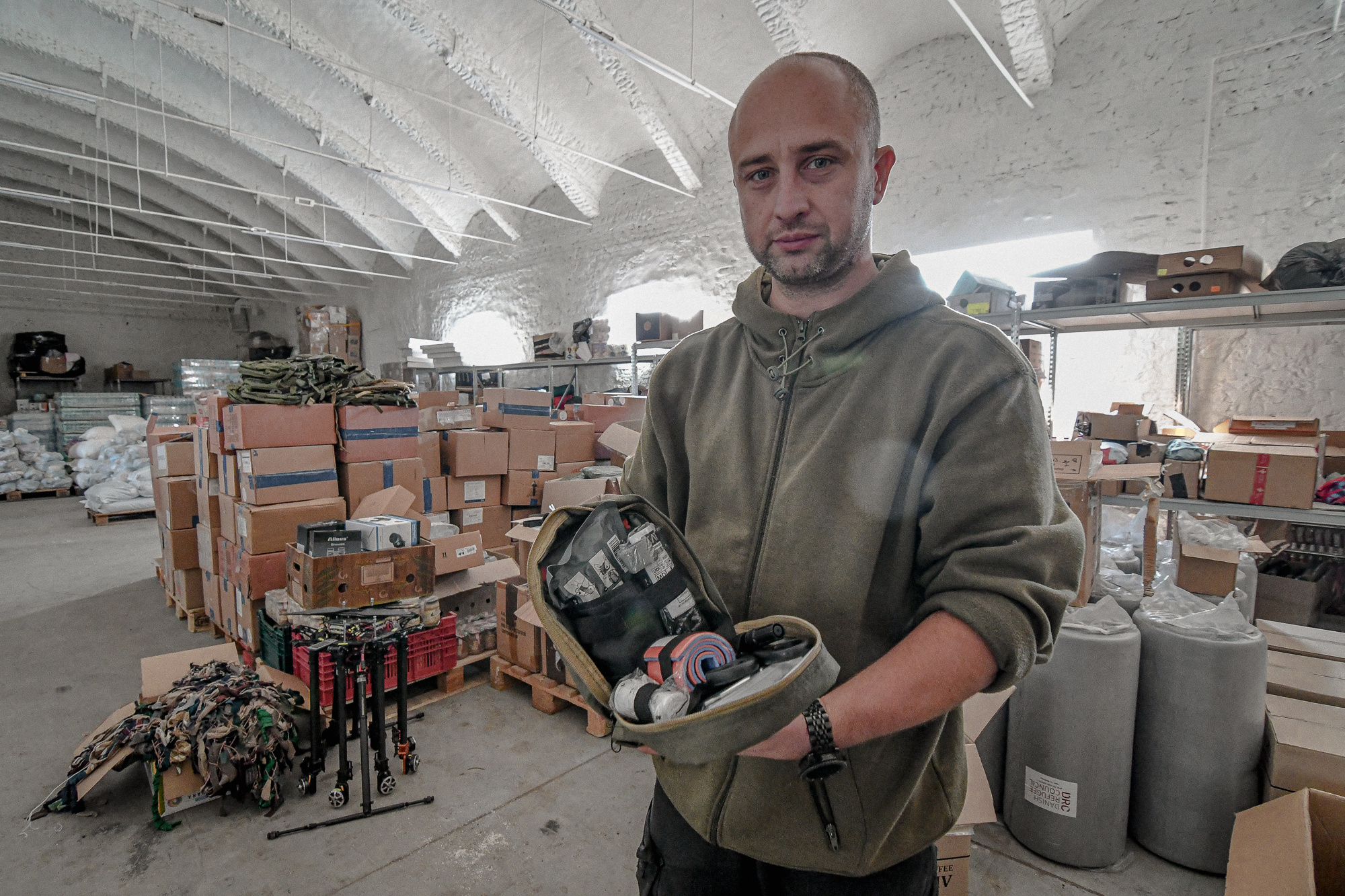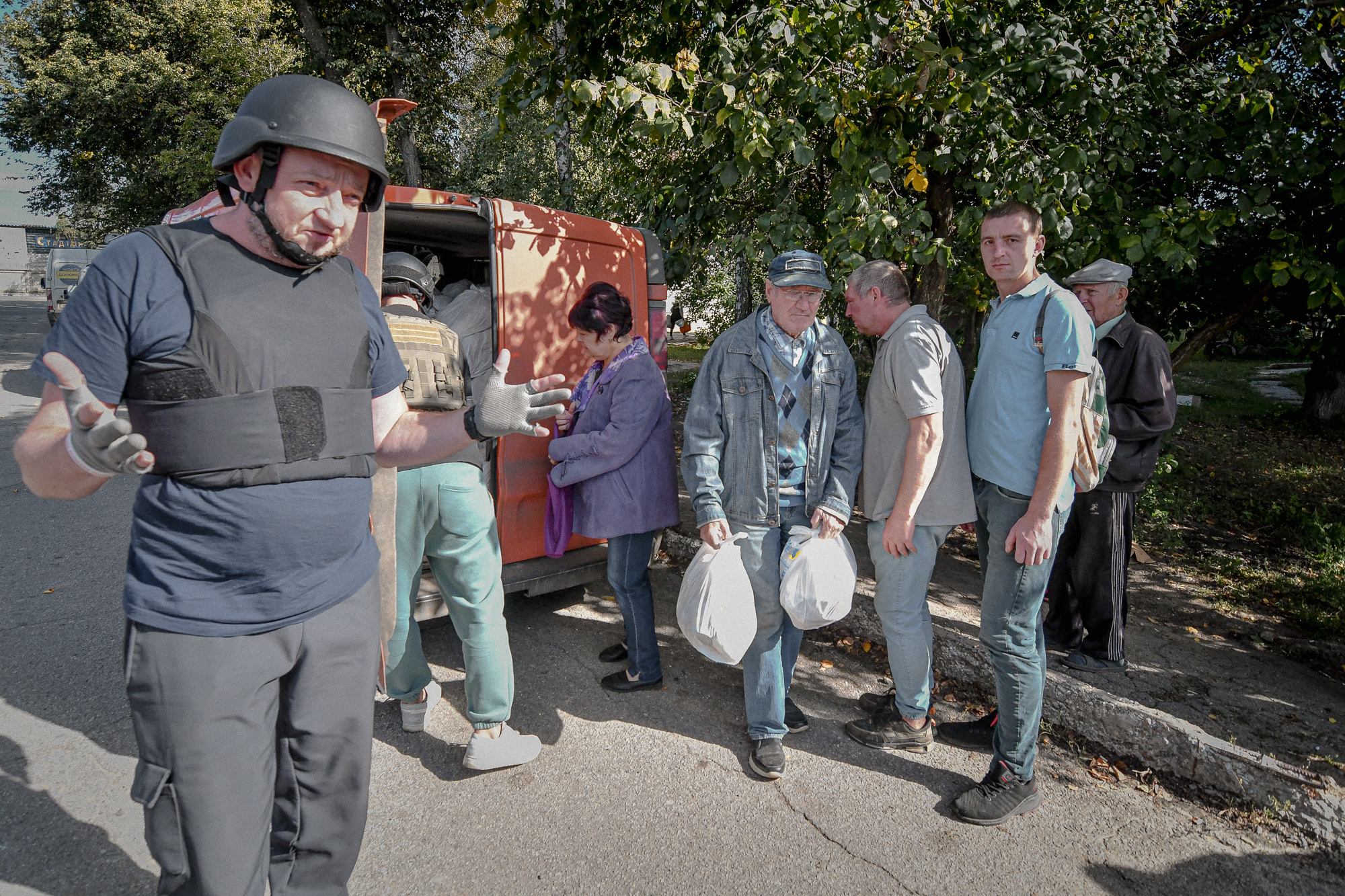In an industrial suburb of Kharkiv, on the trash-littered grounds of a long-abandoned factory, men in combat armor are loading vehicles with everything from 50-kilo bags of flour, to sanitary napkins, to sleeping bags to high-tech, thermal night vision sights.
The civilians work fast. When they run out of room in the cargo compartment, they winch spare tires and hydraulic jacks onto the roof to make space for more supplies. People living on the front line, particularly in territories recently liberated from Russian occupation, have practically no power, no stores, no heating, no communications and no way to escape. They need everything: lighters, insulin, soap, warm clothes, fuel, HF radios, generators, diapers and above all, food that won’t spoil and clean bottled water.
Combat units of the Armed Forces of Ukraine (AFU), sometimes fighting less than a kilometer away, generally receive regular deliveries of food and ammunition – but an infantry squad’s worth of Gore-Tex winter boots, Motorola walkie-talkies, personal wipes, camouflage nets hand-tied by school children and military wives, ballistic vests with Kevlar plate slots, AK-74 rifle flash suppressors, NATO-standard sniper rifles with floating barrels and high-grade optics – Ukrainian troops pretty much always have to look for gear like that beyond the confines of army supply chains.
No AFU front-line outfit, ever, has enough dry socks. The Chinese made Mavic Pro drone – prized by Ukrainian (and Russian) artillery observers for its near-invisibility to radar and excellent optics – is as valuable as gold on the front line: but the Mavic, and thousands of other pieces of critical military kit, just aren’t AFU standard issue.

Kyiv Hit by Massive Drone Attack as Russian Strikes Target Multiple Ukrainian Cities
That, Kharkiv lawyer Ilya Bardin, 32, told Kyiv Post, is where Ukraine’s volunteer army comes in.
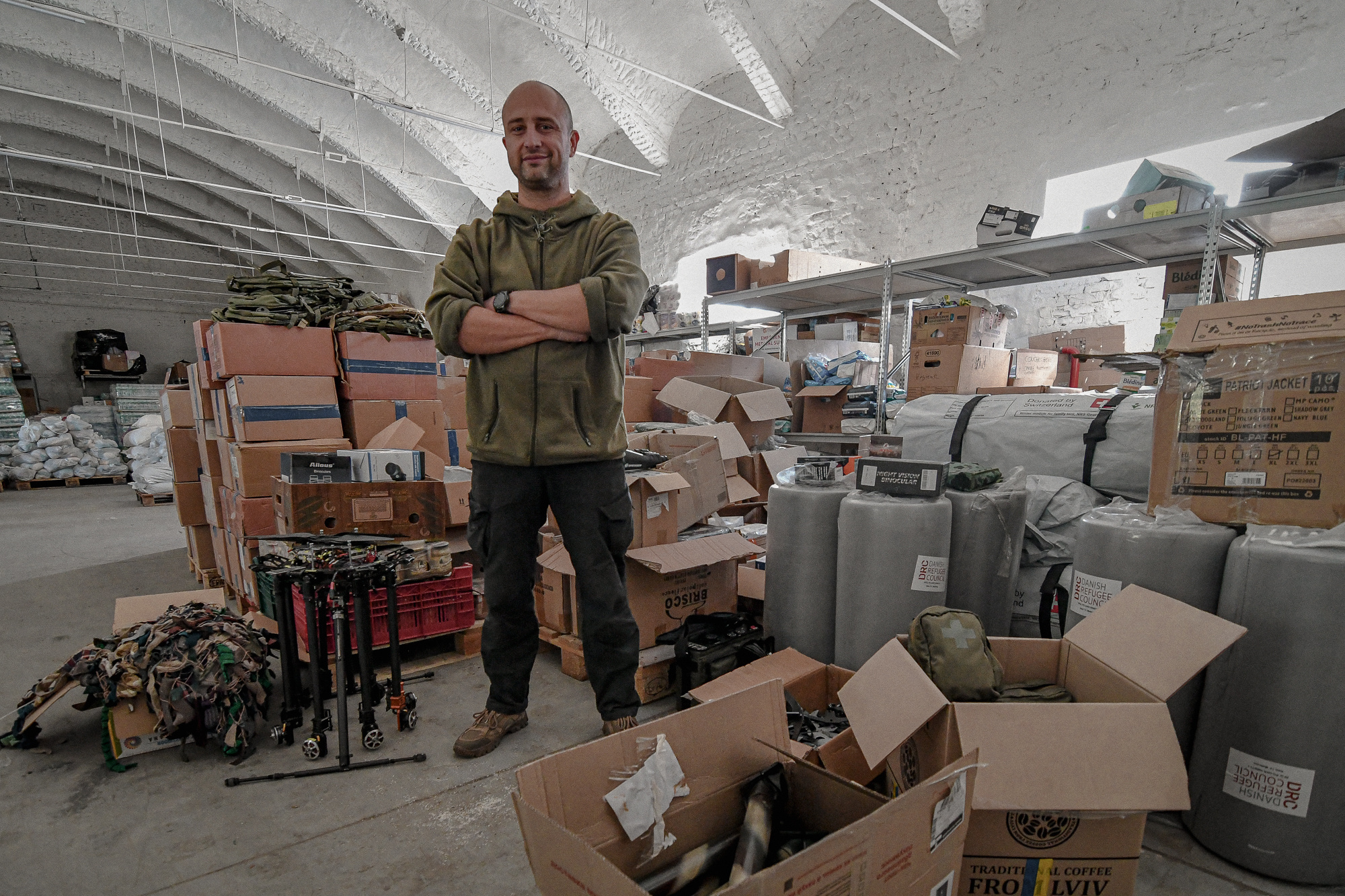
On any given day, in the Kharkiv sector, dozens of often grossly-overloaded civilian vans, 4WD SUVs and just-for-the-city hatchbacks load up at warehouses like Bardin’s and head out.
On Sep. 24 Kyiv Post followed a column of more than 20 vehicles, led by a police car, on a three-hour drive to Izyum. Driven by unpaid volunteers, and splitting into mini-convoys of two to five vehicles, the goods were delivered across the combat combat front, sometimes to fighting units, and sometimes to villagers still far off the grid.
One four-car group loaded with packaged foodstuffs whizzed past checkpoints on Sep. 23 and, among others, an International Red Cross convoy loaded with humanitarian aid but apparently reluctant to drive in the direction of the shooting, and headed into Kupyansk. Kyiv Post saw volunteers hand out food and assistance, and organize the evacuation of more than 20 people, as the Russian and Ukrainian militaries were hurling mortars and rockets at each other less than a kilometer away.
Bardin is one but far from only operator in the Kharkiv volunteer movement. His journey from legal documents to combat logistics was, by Ukrainian volunteer standards, fairly typical.
When the war started he, Bardin was contacted by a friend in the logistics business needing to find a place to deliver food products from a warehouse. The thing was, the warehouse was effectively on the line of contact. Bardin worked with army units in the area to find a safe warehouse to hold the food and hand it out to the troops.
This delivery led to contacts with other volunteer groups, some bringing to Ukraine from Europe, and then to offers of additional help from clients from the fire and tire business, who also were providing supplies via volunteers to the military.
Bardin came to receive more and more goods from more and more sources, and that forced him to search for a dedicated warehouse. Two more Kharkiv volunteers – Sergіy Neshchenko and Pavlo Zharov – helped find one.
On average per day, more than 100 tons of donated goods worth several million dollars are stored in the warehouse, among it mountains of first-aid kits, boxes of auto parts, tools, insulated linens, sleeping bags, boxes with anti-corrosion masks, rolls of adhesive tape, a set of adhesive stitches , binoculars, batteries, pans, frying pans, drones, thermal imagers, other night vision devices, and pre-packaged food. Sometimes, Bardin said, armor rarely weapons and other personal combat equipment acquired by private individuals and with a specific addressee and often a special mission, pass through the warehouse.
Bardin said priority is given to combat units like the 92nd and 40th Brigades in the regular army, the local 127th and 113 Territorial Defense Brigades, Special operations units, SBU teams, and police, among many others.
Probably, the most peculiar food item observed by Kyiv Post in the warehouse, was canned Israeli chicken in barbecue sauce.
Bardin said he was only one of several supply base volunteer operators in Kharkiv Region, and that, without other volunteers subjecting themselves and their vehicles to punishing drives to and from the front, nobody would get anything.
Oleksander Kusaiko, 42, ran a construction firm with more than 100 staff before the war, and (his estimate) a yearly gross north of a few million dollars. When the Russians invaded the first thing he did was to get his wife and daughter to safety (Switzerland). Then he found his way into circles of volunteers helping out at the front, and now he heads up Zhovta Dopomoha Kharkiv (ZDK), one of the most active volunteer delivery groups in the Kharkiv sector. Their job, basically, is getting stuff from Bardin’s warehouse (and those belonging to others) to the people that need it.
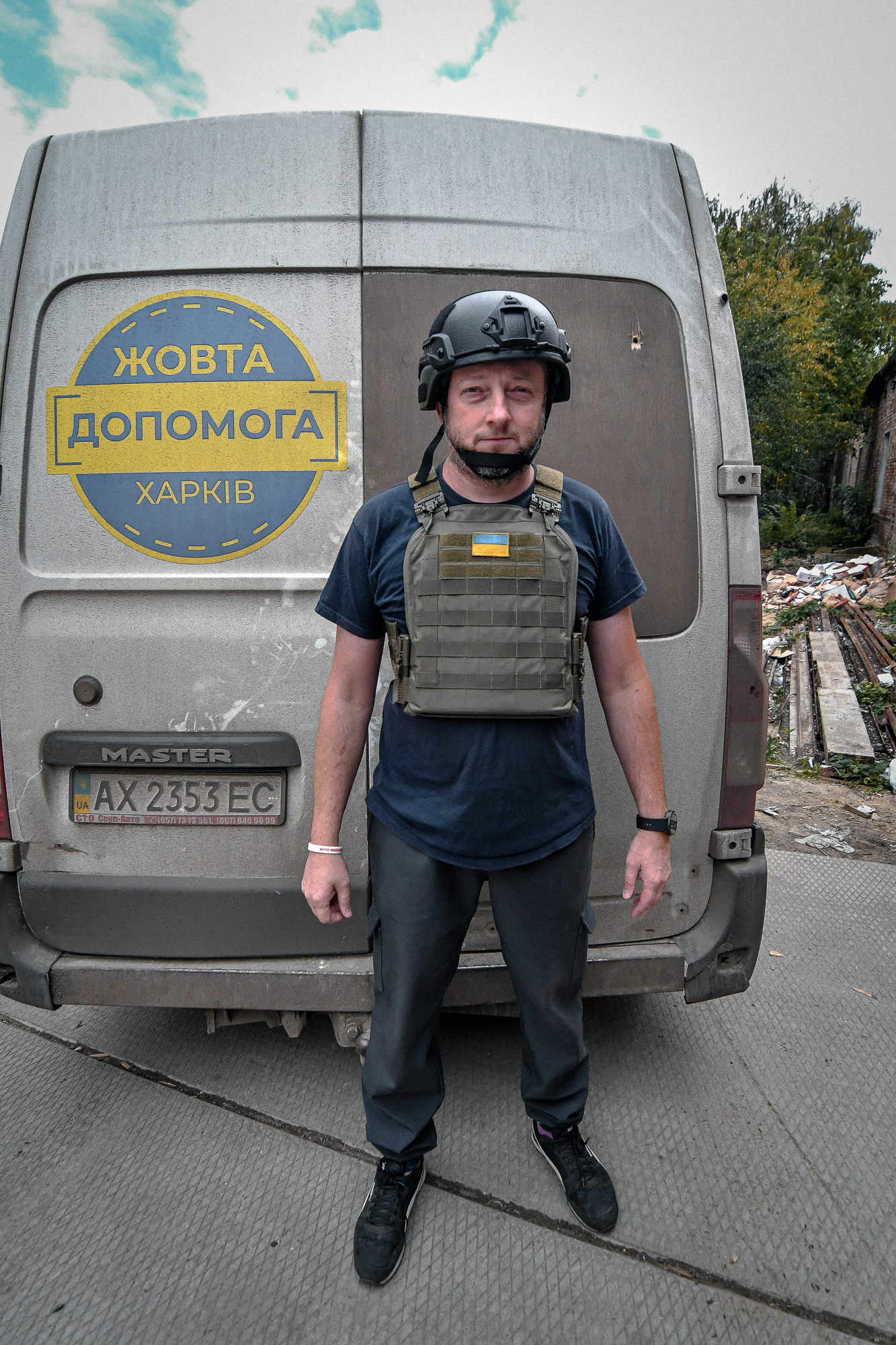
No one in ZDK has been hit – yet. There have been close calls. On Sep. 23, a Russian machine gunner (Kusaiko thinks) opened up on his van during a food delivery to Kupyansk residents, puncturing it twice. The closest round hit about a meter away – from Kusaiko.
Usually upbeat and clearly skilled at a salesman’s pitch, aside from food and supplies, once he shows up in a front line village Kusaiko frequently delivers the news to people who have been under fire and outside communications, at times for weeks. Top subjects are how to evacuate (waiting on the Ukrainian government or international agencies could be slow, it is probably faster to ride with volunteers), and the progress of the war (the Russians are still fighting but getting pushed back). He also asks what should be delivered next time (he was told warm clothes, water and candles).
In the northern town of Kozachy Rohan, less than 10 kilometers from the RF border, volunteer Mykola Zynoviev, in civilian life a courier, showed up on Sep. 25 with a delivery. The power is out, the only water is from wells, phones don’t work, the main street is still rubble, only a single policeman lives there, public transport doesn’t function, and AFU positions nearby are still under intermittent Russian fire. In Kozachy Rohan, most likely, Zynoviev is the only real contact that villagers have with the outside world.
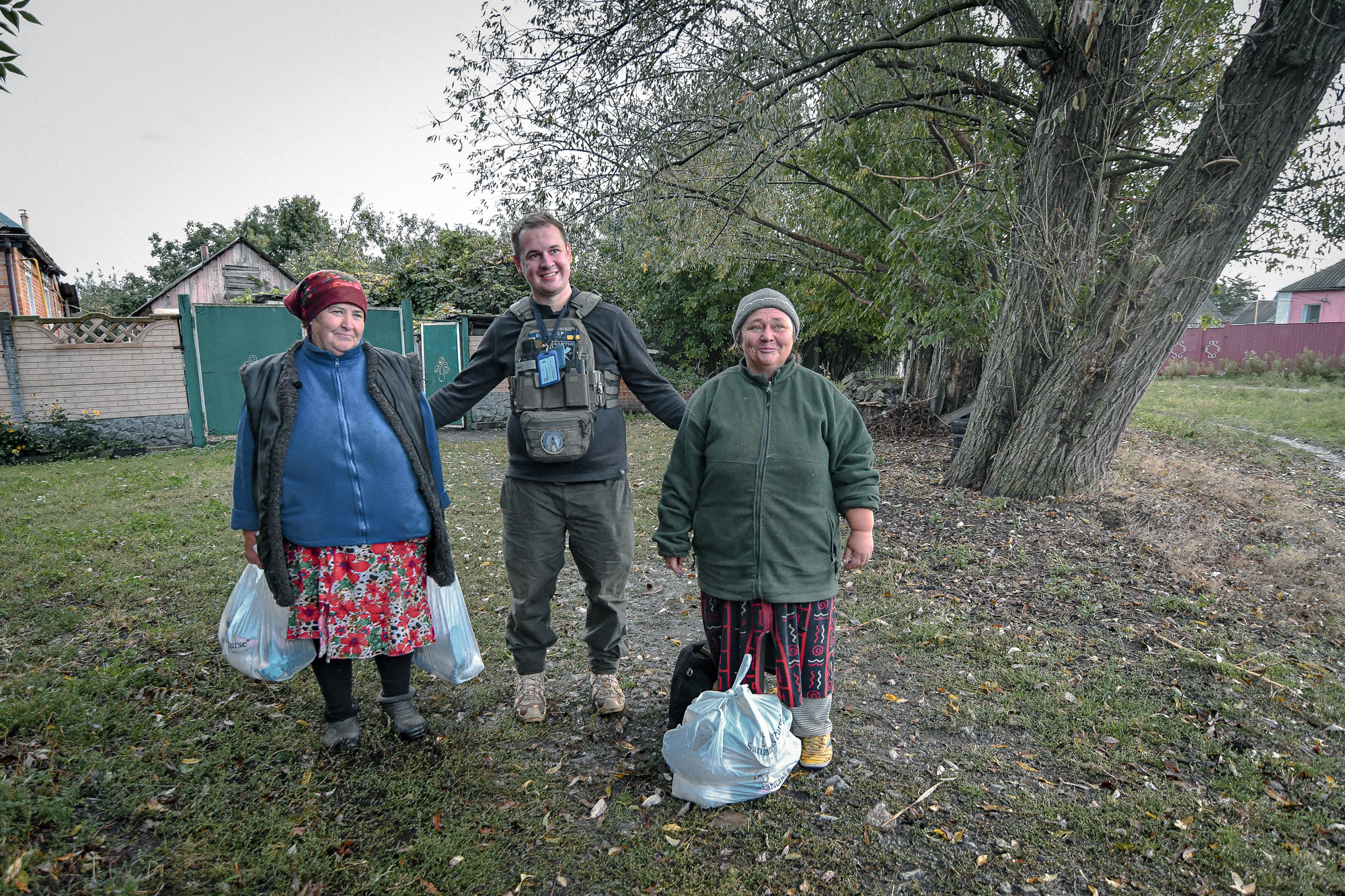
Carrying along a village councilwoman as a guide, Zynoviev drove door-to-door, sometimes spinning out his 2WD Renault in black mud streets looking for homes containing children. The mission was to hand over a care package with fortified oatmeal, nut bars and individual juice packs to each kid found – 16 of them as it turned out.
Accounting for all the goods and materials hauled hither and thither in Kharkiv Region is surprisingly simple: the volunteer gives the recipient the item and someone snaps a photograph. When people don’t want their picture taken, the volunteers take down the person’s contact information and the goods are signed for, to record who brought the assistance and who received it.
One woman flatly refused to have her picture taken. She didn’t care about the Ukrainian army mortar slowly throwing bombs in the direction of Russia; it was because she wasn’t properly dressed. Zynoviev gave her the food package anyway.
You can also highlight the text and press Ctrl + Enter


